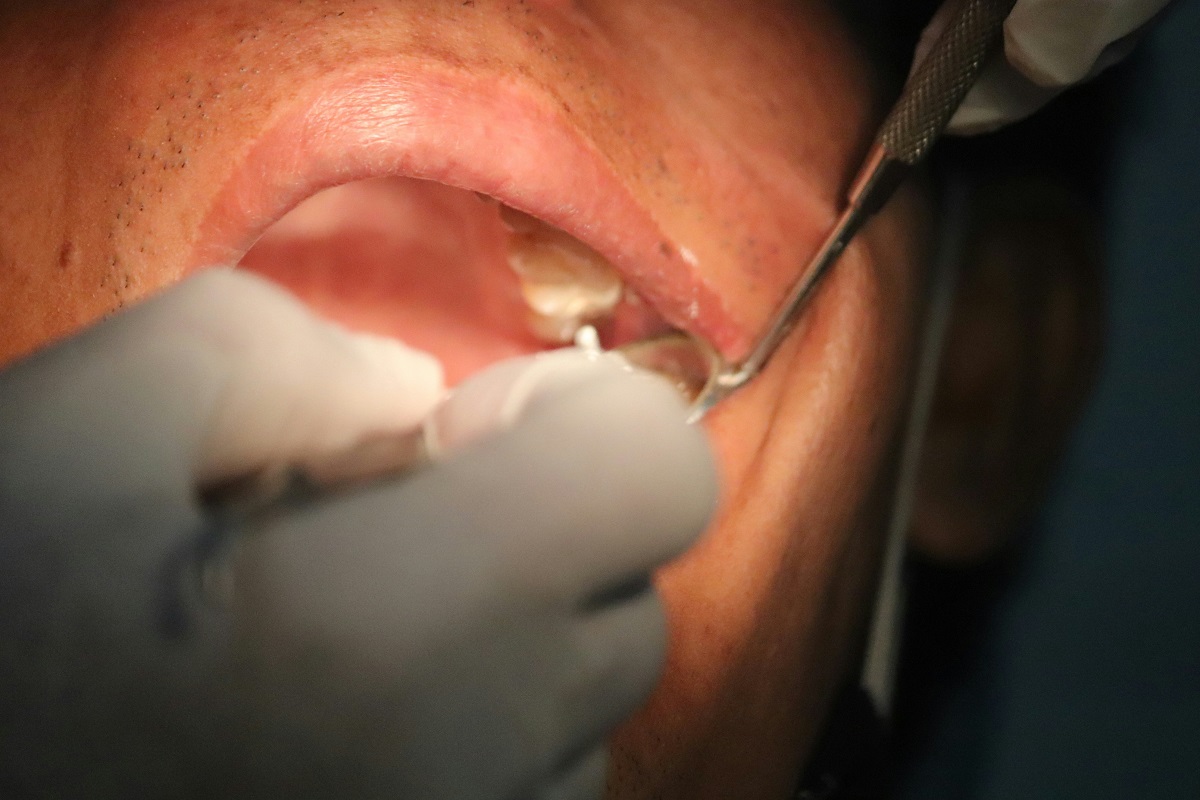Even with all the at-home techniques and treatments available, face hair removal can still be a little challenging. Yes, you could use tweezers to remove a few stray hairs or dermaplaning to remove some peach fuzz. If that doesn’t work, you can also try waxing, threading, and shaving, but none of them will stay very long. Now for the permanent or semi-permanent hair removal techniques that can successfully get rid of facial hair: Laser Hair Removal vs. Electrolysis. These are two common long-term hair removal techniques. Both function by concentrating on hair follicles that are beneath the skin’s surface.
The American Society for Dermatologic Surgery reports that laser hair removal has increased since 2013, growing by about thirty percent. While electrolysis is becoming more and more popular, it is not as widespread as laser therapy. Here you find professionals’ opinions and all the necessary information you need to know about electrolysis and laser hair removal for your face since we understand that the thought of undergoing either treatment might be a little frightening. Continue reading to determine: laser hair vs. electrolysis, which one is the best choice for you. You will also learn about the advantages, dangers, and other details of every process by reading this article.
What is Electrolysis?
One technique for hair removal is electrolysis. By putting a wire into the hair follicle beneath the skin and killing it with an electric current, this procedure stops the hair follicle from growing. For the therapy to be completely effective, you’ll need several sessions (typically six to eight over a year or so), according to board-certified dermatologist and FACET Dermatology founder Geeta Yadav, MD. “The only purpose of this procedure is to permanently stop the growth of particular hairs, such as one or two bothersome chin hairs.”
What Is Laser Hair Removal?
A laser, or light-based energy source, is used in laser hair removal to target the pigment cells within the hair follicle, according to board-certified dermatologist Georgina Ferzli, MD. Targeting these cells weakens the hair follicle cells, which reduces hair and slows down hair growth, the expert claims. The melanin in the hair follicle is the target of the laser utilized in laser hair removal. Throughout several sessions—typically five to ten spaced out around every four to eight weeks—this destroys the follicle, ultimately leading to decreased hair growth.
“This method works best on larger regions of unwanted hair growth, like the bikini line or armpits, as opposed to single hairs,” says Dr. Yadav. “Many people find that having laser hair removal reduces the appearance of “strawberry legs,” which are dark follicles surrounded by redness. As the follicle is significantly diminished, it also reduces the formation of razor bumps (if they still need to shave the area) and ingrown hairs.”
Difference: Electrolysis Vs Laser Hair Removal
As per Dr. Yadav, there are significant differences in both the technique and outcome between electrolysis and laser hair removal. A hair that has been electrolyzed is permanently damaged and cannot grow back. Although it targets the hair follicle differently and can treat a greater area at once, laser hair removal can also irreversibly harm the hair follicle. According to Dr. Yadav, “you can anticipate that the hair growth in the treated area starts to thin out first, before disappearing,” when receiving laser treatment. “To maintain the sparse hair growth, you might need touch-up sessions.”
The way the two are shaved is another distinction. To receive the best results from laser hair removal, you must shave before the procedure. This is because shaving helps the device focus its energy more effectively on the hair follicle rather than the skin. You cannot shave right before electrolysis, says Dr. Yadav, since this would make it harder for the technician to locate the hair and do the procedure.
And lastly, the issue of hair color. Darker-haired people are better candidates for laser hair removal. If the pigment is too light, people with lighter hair (or gray hair) won’t see any improvement at all. “People with deep skin tones should ideally only receive treatment from a skilled practitioner equipped with the appropriate technology to address their skin tone,” advises Dr. Yadav. “All skin tones and hair colors can benefit from electrolysis.”
Regretfully, electrolysis usually causes more discomfort than laser hair removal. Even if you have previously received numbing cream treatment, this focused energy can still cause stinging. Most people report that laser hair removal is uncomfortable rather than painful. It feels like a rubber band snapped around your body. “New follicles may still grow and appear in the skin, in which case there can be new growth,” cautions Dr. Yadav. “Both treatments can permanently prevent new growth from existing follicles.”
Electrolysis vs. Laser Hair Removal: How to Select the One That’s Right for You
Asking your dermatologist which choice is best for you is something Dr. Ferzli advises doing. However, if you have blonde, white, or gray hair and would want to skip the dermatologist, she suggests electrolysis. “A laser treatment that is effective for hairs lacking pigment has not yet been developed,” the spokesperson states. “I’ve taken part in a few trials where we attempted to use gold or silver tags on the hair follicles to see if the laser could treat the lighter hairs, but the outcomes weren’t very good.”
When selecting a hair removal treatment, it is important to take into account your skin tone, hair color, and desired hair removal volume. According to Dr. Yadav, electrolysis is the best option if you have a deep skin tone, white or fair blonde hair, and a small number of hairs that you want to eliminate. “Laser hair removal is for you if you want to cover a larger treatment area and have dark hair.”
Laser Hair Removal vs. Electrolysis: Risks
Every treatment choice carries some degree of risk. To assess your risk, your healthcare professional will inquire about your propensity for developing keloid scars, according to Dr. Yadav.
Regardless of your skin tone, burns, hypopigmentation, and hyperpigmentation are all possible side effects of laser hair removal. It is crucial to have therapy from highly qualified and experienced medical professionals when pursuing these treatments since this will significantly reduce your chance of adverse consequences. Dr. Yadav asserts that most side effects happen when patients receive care from untrained or underqualified professionals. The safest course of action for these therapies is to see a dermatologist.
In agreement, Dr. Ferzli advises seeing your dermatologist or other physician, as they are knowledgeable about the best lasers to use. “It is a good idea for a professional to select the most efficient and effective treatment—you will save money, time, and suffering if the best results are achieved in the shortest amount of sessions,” the expert advises.
Bottom Line
Bottom Line: Both laser hair removal and electrolysis can banish unwanted hair. They differ in how they work and who they benefit most. Laser hair removal is faster and better for larger areas, but it works best on dark hair and light skin tones. Electrolysis works on any hair color and skin tone, but it’s slower and better for smaller areas. Consider laser hair removal for a speedy escape from coarse, dark hair, and electrolysis for tackling any hair color with precision, no matter your skin tone. A consultation with a dermatologist will help you pick the perfect weapon in your fight for smooth, hair-free skin.
FAQs: Laser Hair Removal vs. Electrolysis
1. What’s the difference between laser hair removal and electrolysis?
Laser hair removal and electrolysis are both methods for achieving long-lasting hair removal, but they work in different ways. Laser treatment uses concentrated light beams to target the pigment in your hair follicles, damaging them and slowing down hair growth. Electrolysis, on the other hand, uses a tiny probe inserted into each hair follicle to destroy it with heat or chemical reaction.
2. Does it matter what color my hair is?
Yes, hair color can affect which treatment is best for you. Laser hair removal works most effectively on dark, coarse hairs because the laser targets pigment. If you have light blonde, red, or gray hairs, electrolysis might be a better option as it targets each follicle individually, regardless of hair color.
3. How many treatments will I need?
The number of treatments needed for either method depends on the area you’re targeting and your hair growth cycle. Laser hair removal typically requires 4-8 sessions spaced out several weeks apart to catch hair in different growth phases. Electrolysis can take significantly more sessions, especially for large areas, as each hair follicle is treated one by one.
4. Will it hurt?
Both treatments can cause some discomfort, but the sensation differs. Laser hair removal might feel like a rubber band snapping against your skin. Electrolysis can feel like a tiny pinch or prick at each treated follicle. Topical numbing creams can help manage discomfort for both methods.
5. How fast can I get smooth skin?
Laser hair removal offers quicker results because it treats larger areas at once. You might see noticeable reduction after just a few sessions. Electrolysis is a slower process as it targets individual hairs. However, with consistent treatments, both methods can achieve long-lasting results.
6. Are the results permanent?
Both laser hair removal and electrolysis offer permanent hair reduction. However, it’s important to understand the difference. Laser hair removal significantly weakens hair follicles, but some may still grow back finer and lighter. Electrolysis aims for complete destruction of the hair follicle, leading to the most permanent hair removal results.
7. How much does it cost?
The cost can vary depending on the size of the treated area, the number of sessions needed, and the location of the clinic. Electrolysis might be less expensive per session, but the total cost can be higher due to the potentially larger number of sessions required.
8. Is everyone a candidate for these treatments?
Laser hair removal might not be suitable for people with tanned or very dark skin tones as it can increase the risk of side effects. Electrolysis is generally considered safe for all skin types. However, it’s always best to consult a professional to ensure you’re a good candidate for either treatment.
9. Can I do this at home?
At-home laser hair removal devices are available, but professional treatment is highly recommended for safety and effectiveness. Electrolysis should only be performed by a trained professional to avoid complications.
10. So, Electrolysis Vs Laser Hair Removal…which option is right for me?
The best way to choose between laser hair removal and electrolysis is to consult a professional! They can assess your skin and hair type, desired results, and budget to recommend the most suitable treatment for achieving smooth, hair-free skin.






